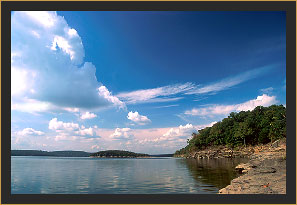|
Exposure Without a Meter Text & Photography © Ron Day In a past issue of Outdoor Photographer, David Stoecklein states in his article Perfect Exposure without a Meter: "...[I]t's embarrassing to call yourself a professional photographer -- or even a serious amateur -- if you can't look at the light in any situation and know where you need to be (with exposure)." So here is the simple formula for accurately determining the exposure of a middle tone subject on a bright sunny day without a meter. The correct exposure at f/16 is the shutter speed closest to the reciprocal of the ISO. In other words, the formula for correct exposure is: Exposure = 1/ISO @ f/16.
When shooting at ISO 200, the correct exposure for bright sunny conditions is 1/250 sec. at f/16, because 1/250 sec. is the standard shutter speed closest to the reciprocal of ISO 200. When shooting Fuji Provia 100 slide film, the correct exposure in bright sunlight is 1/125 sec. at f/16, because 1/125 is the standard shutter speed closest to the reciprocal of film's ISO rating - 100. And, if you don't want to shoot at f/16, any equivalent exposure will work. For example, 1/125 at f/16 is equivalent to 1/250 at f/11, or 1/500 at f/8, or 1/1000 at f/5.6. In bright sunlight, it is fairly easy for a camera's light meter to be thrown off by light colored or shiny surfaces. For this reason, many professionals rely on the Sunny f/16 rule in these conditions. Another well known pro, John Shaw, says he takes "thousands" of photos this way. The rule works well with film and digital photography. After you become comfortable using the basic Sunny f/16 Rule, you can start making adjustments in exposure for sidelight (+1.0 EV), and backlight (+2.0EV) in the photographs you make in bright daylight.
|
